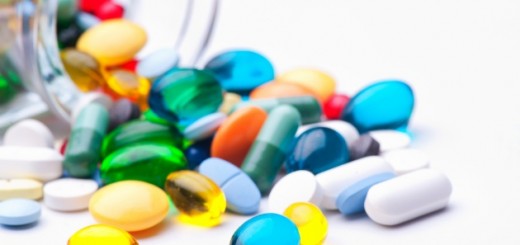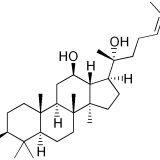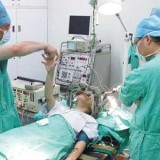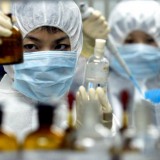Small-cell carcinoma (also known as “small-cell lung cancer”, or “oat-cell carcinoma”) is a type of highly malignant cancer that most commonly arises within the lung. The cells in small-cell carcinomas are smaller than normal cells, and barely have room for any cytoplasm. In a significant number of cases, small-cell carcinomas can produce ectopic hormones, including adrenocorticotropic hormone (ACTH) and anti-diuretic hormone (ADH). Ectopic production of large amounts of ADH leads to syndrome of inappropriate antidiuretic hormone hypersecretion (SIADH). Lambert-Eaton myasthenic syndrome (LEMS) is a well-known paraneoplastic condition linked to small-cell carcinoma.
Small-cell carcinoma is very responsive to chemotherapy and radiotherapy, and in particular, regimens based on platinum-containing agents. However, most people with the disease relapse, and median survival remains low.
Protopanaxadiol (PPD), the activated ginsenoside from ginseng, however, has been found to have a strong inhibitory effect on small cell lung cancer, a research published on Chinese Herbal Medicines (2008, issue 12) reported.
In the research, PPD was added to cell culture of small cell lung cancer, and triggered apoptosis in 33% cells after 24 hours. Furthermore, PPD was given to a small cell lung cancer model established on mice, and tumor growth was significantly reduced by PPD injection, with a maximal inhibition rate of 50.02%.
Due to the high rate of drug-resisance in recurrent small cell lung cancer, traditional chemotherapy does not achieve satisfying efficacy; therefore, the combination use with PPD might give rise to better outcomes, especially considering PPD’s superiority as a non-toxic medication.











































